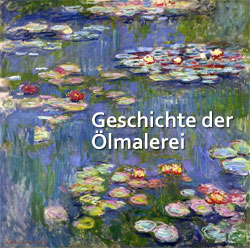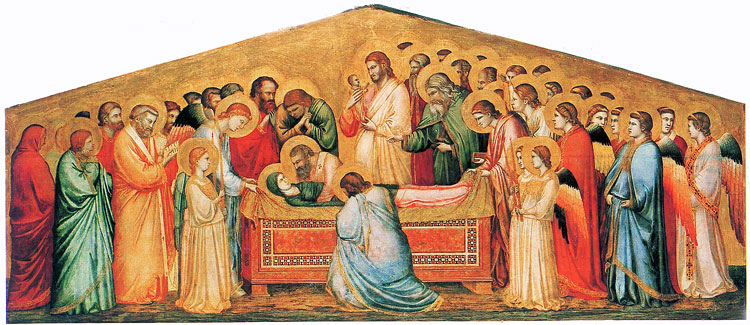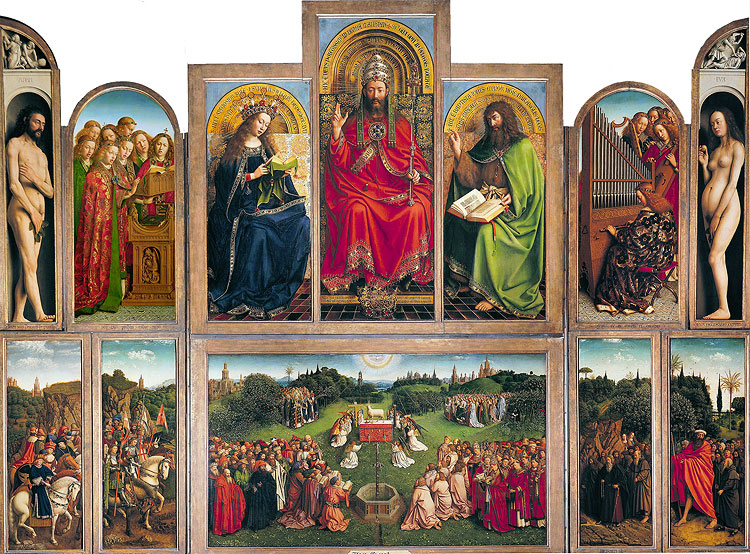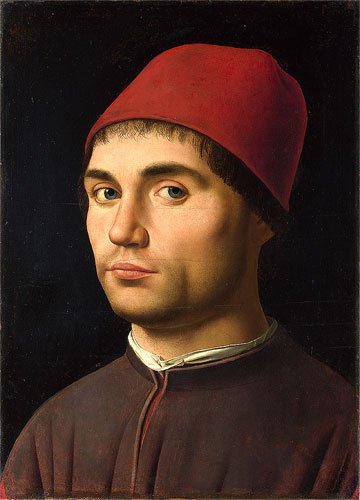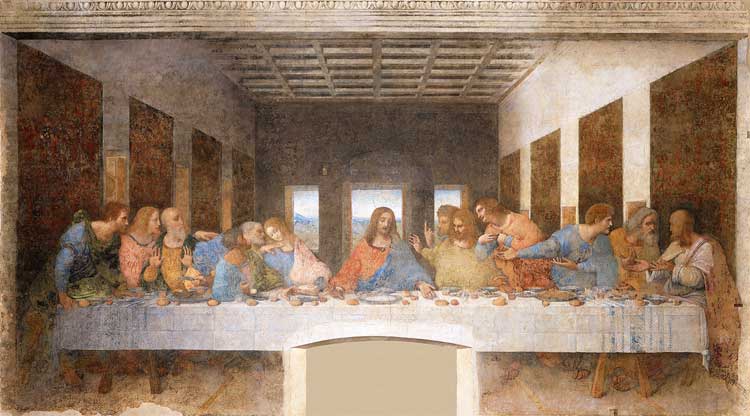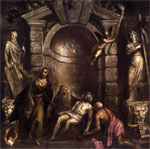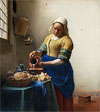The history of oil painting is part of the history of painting, which demonstrably begins with cave painting. The special history of oil painting refers to (artistic) works painted with oil paint. It begins around the 14th century with the "invention of oil paint". Basically one cannot speak of "the invention", because the beginning was made by technical painting experiments in the artist's workshops in Italy and the Netherlands.
Before: Tempera Painting
Previously, pictures were usually painted with tempera colours. Tempera ("mixture") is an emulsion, i.e. a mixture of an oily and an aqueous solution. The decisive factor here is the binder to hold the pigment in suspension. Tempera paint had (and still has) a major disadvantage: it is made from natural products such as egg or quark - and therefore spoils relatively quickly. Moreover, due to the water content in the paint, it dried relatively quickly, which forced the artists to work very quickly (and plan thoroughly beforehand) or to correct it by overpainting.
Technical painting experiments with oils
Gradually the artists experimented with new oils, e.g. linseed oil, sunflower oil, poppy oil and others. They tried to change the mixing ratio of the emulsion so that it contained hardly any perishable ingredients. Instead, various resins (e.g. Dammar or Mastix) were added to the oil-containing binders, which have a particularly high adhesive strength. This type of binder fundamentally changed the effect of the pictures and the artistic creative process: the colours shine much more intensely and brilliantly. Oil paint dries much more slowly, so you have much more time to paint.
However, you have to prepare the painting ground differently, and also the paint application must run from "lean to fat". This means that you have to apply the faster drying structures before you paint the "greasy" layers. Reason: if the upper layers dry well before the lower ones, there will be tensions on the surface which will cause them to burst.
The oil paint usually forms a relatively firm layer (in contrast to e.g. Tempera or watercolor paintings). If the substrate "works" in the course of time due to weather conditions, which happens especially with wooden panels, the paint often bursts on the surface. The result is a mesh-like net of fine cracks (so-called craquelure), which can be found today in many old oil paintings.
Jan van Eyck: The Genter Altar
The Old Dutch painter Jan van Eyck (c. 1390 - 1441) is regarded as a protagonist in the history of oil painting. Together with his brother Hubert van Eyck, he ran a painter's workshop that initiated many groundbreaking developments in painting techniques. This includes in particular oil painting (Jan van Eyck was mistakenly regarded as the "inventor of oil painting" for a long time due to a remark by the art chronicler Giorgio Vasari).

Mary - Detail from the Ghent Altar
van Eyck's main work is the world-famous "Genter Altar", which was celebrated as a masterpiece by contemporaries for its naturalism and the intensity of its colours. The picture appears as noble and pure as the numerous gemstones and precious robes. By the way, it is controversial whether he painted it alone - or his brother Hubert played a decisive role.
Van Eyck painted the individual panels of Alterwerk in many layers, applying the oily (glossy) colours to the underlying layers with a glaze. Thus a previously unknown brilliance of colour developed.
Jan van Eyck by no means painted exclusively with oil paint. As mentioned before, it was a slow development from the predominant tempera painting to oil painting.
Antonello da Messina launches oil painting technique in Italy
The Italian painter Antonello da Messina (1430 - 1479) is regarded as the one who introduced the new oil painting technique to Italy and thus influenced many famous painters. Contrary to what Vasari claims, Antonello probably never met Jan van Eyck (he was only 11 or 12 years old when he died). But Antonello certainly saw paintings by van Eyck in Italy and studied the surfaces exactly. Possibly the owners were also able to report on the new technical achievements in painting to a certain extent. Maybe Antonello met Peter Christ (a colleague of van Eyck) in Milan.
In any case, Antonello himself began to work with oil paints and create similarly impressive pictures as van Eyck did north of the Alps. Especially his expressive portraits caused a sensation. Antonello was a much respected painter and received numerous commissions.
Thanks to oil painting, Antonello was able to differentiate the colour gradients much more finely, thus achieving a softer, more natural look. This in turn made it possible to increase the contrast between light and shadow. This dramatic interplay of light and shadow was to be taken up later by Caravaggio and driven to mastery.
Failed Oil Painting: The Last Supper (Leonardo da Vinci)
A good example of a failed oil painting technique is the famous "Last Supper" by Leonardo da Vinci (btw: here my cartoon version). Leonardo particularly appreciated the slow drying process of the oil paint, which allowed him to take longer breaks (whether to improve the concept of the work or to pursue other activities). The fresco painting that had been common until then required a very disciplined work, because the colours dried within a few minutes.
Leonardo painted with the oil paint (according to today's analysis probably a tempera with high oil content) on a wall pretreated as a fresco - with the result that the paints (or the binder) dried much faster in the lower layers due to the too high absorbency of the wall. The result was numerous cracks - and some of the small paint slabs could not adhere to the coarsely plastered wall and crumbled. Already during his lifetime, the monks who had commissioned the (today world-famous) masterpiece had complained and wanted their money back - whereupon Leonardo left Milan without further ado and fled to France. The example shows how important the right primer is in oil painting.
In the following detail you can see the decayed state of the painting - and at the same time the great modelling of the physiognomies that made the work world famous.
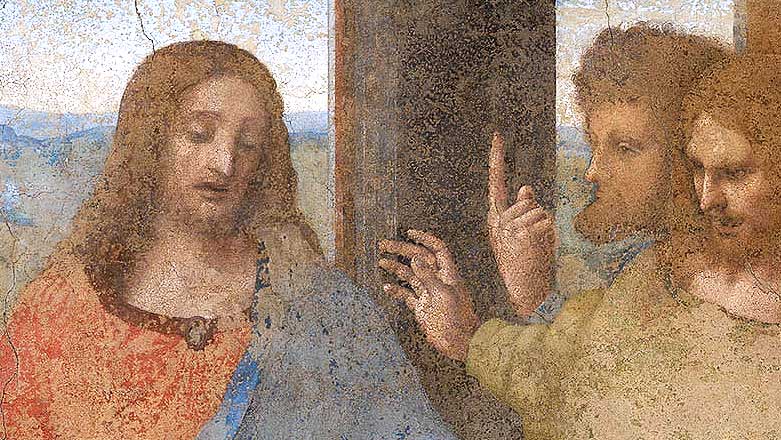
Poorly preserved oil painting: Jesus with Thomas and Jacobus (from left to right), detail from "The Last Supper".
Oil painting becomes predominant painting technique
In the course of the Renaissance, oil painting became increasingly popular. The colours became more durable and could be stored. Their effect with the shiny surfaces "refined" the paintings. The artists perfected the painting technique and experimented with new forms of paint application..
Titian
The artists you could introduce here go into the hundreds. Only a few are mentioned as examples. The Venetian painter Titian (around 1490 - 1576) is considered one of the main representatives of the late Renaissance.
Particularly in his late work, he used oil painting for spherical pictures whose painterly structures appear very modern. It is an introduction to the Baroque period, whose enraptured playfulness could be expressed particularly well by means of painting. The following picture shows a detail from the very large-format painting "Pièta", which he painted only a few months before his death:
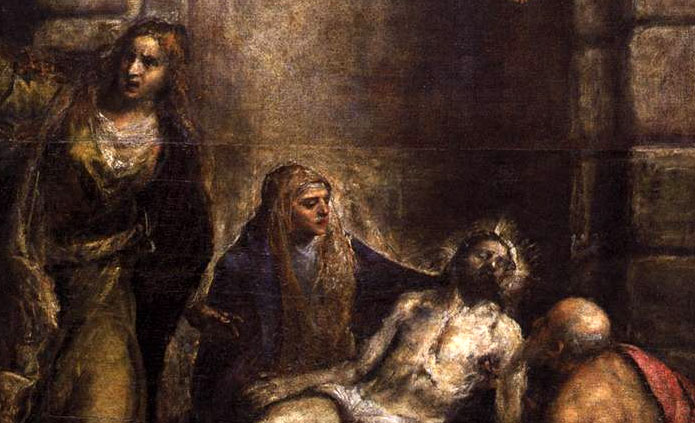
Titian painting (late work): Detail from "Pieta" (1576)
Jan Vermeer
North of the Alps, Jan Vermeer (1632 - 1675) achieved an unparalleled mastery of the lighting effect. His oil-painted paintings reveal in detail the painterly application of paint, which from a distance is combined to form light-flooded scenes.
Vincent van Gogh's quote: "[...] The combination of lemon yellow, pale blue and light grey is as characteristic of him as the harmonisation of black, white, grey and pink in Velázquez". The following detail shows an excerpt from the painting "Servant maid with milk jug":
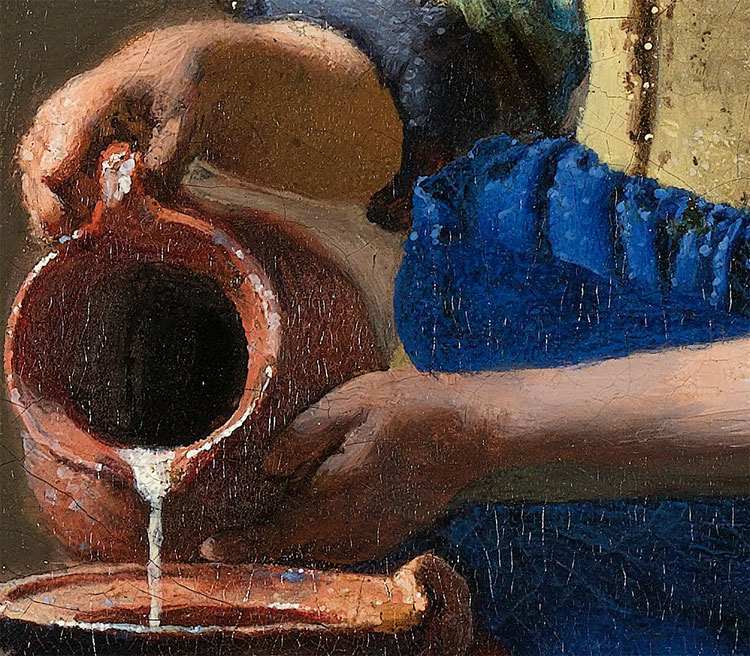
Vermeer oil painting: detail from "Dienstmagd mit Milchkanne" (1658 / 1660) by Jan Vermeer
...
This story could be continued indefinitely. Artists such as El Greco, Velazques, Rembrandt, Rubens, and many more have made use of oil paints and the associated painting techniques. However, they all had one thing in common: they ran large workshops / studios in which the paint, i.e. binding agents and pigments, were created. The next momentous step in the history of oil painting did not follow until the middle of the 19th century.
The invention of the oil paint tube
The American painter John G. Rand (1801 - 1873) did not go down in art history because of his paintings, but because of a groundbreaking invention: the tube for oil paints. He wanted to use these lead tubes to protect his paints from drying out. On September 11, 1841, he applied for a patent for his invention. In it he describes "a container that is intended to conserve paints and other liquids by filling them into a metal container that can be compressed and left airtight after use". In this way he revolutionized art.
The world-famous Impressionist Auguste Renoir (1841 - 1919) once said: "Without the paint tube there would have been neither a Cezanne nor a Manet, perhaps no Impressionism at all".
The London-based company Winsor & Newton took up the patent in the same year 1841, developed a corresponding rotary head cap and added it to its product range. With resounding success: many artists were enthusiastic about the newly gained freedom to easily store and take colours with them. The door was opened for plain-air painting. The French painter Eduard Manet used the new possibilities and thus became a pioneer of the Impressionists.
Claude Monet
A painting by the French painter Claude Monet (1840 - 1921) became the eponym of a world-famous painting by a critic's (derogatory) remark: Impressionism.
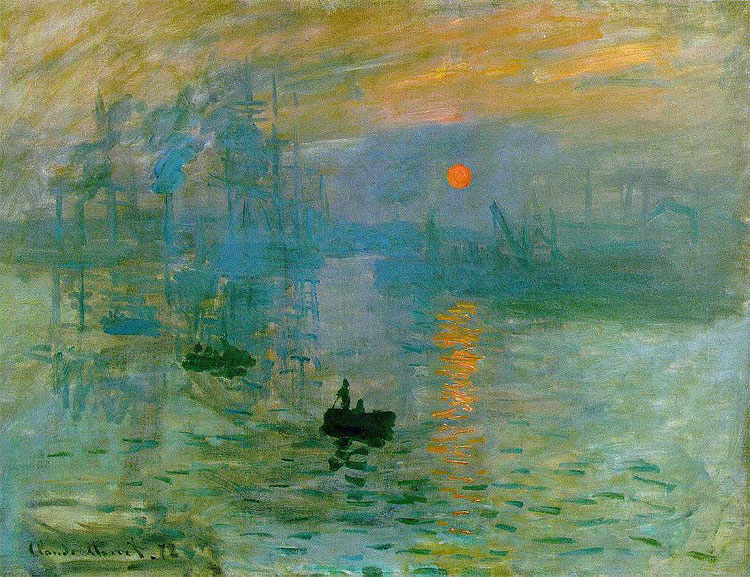
"Impression Sunrise" (1872) by Claude Monet
The oil paint was mixed on site, i.e. at the harbour, and applied directly, quickly and pastily, to the canvas. No more elaborate background painting, no more multi-layered layers, simply directly on the canvas. The use of paint as a material became easier and easier, so that the painters could turn to new concepts.
Paul Cezanne
The French painter Paul Cezanne (1839 - 1906) was also repeatedly drawn out into the open. His handling of oil paints was characterized by rather short strokes set with a broad brush, which resulted in impressive, almost abstract carpets of paint.
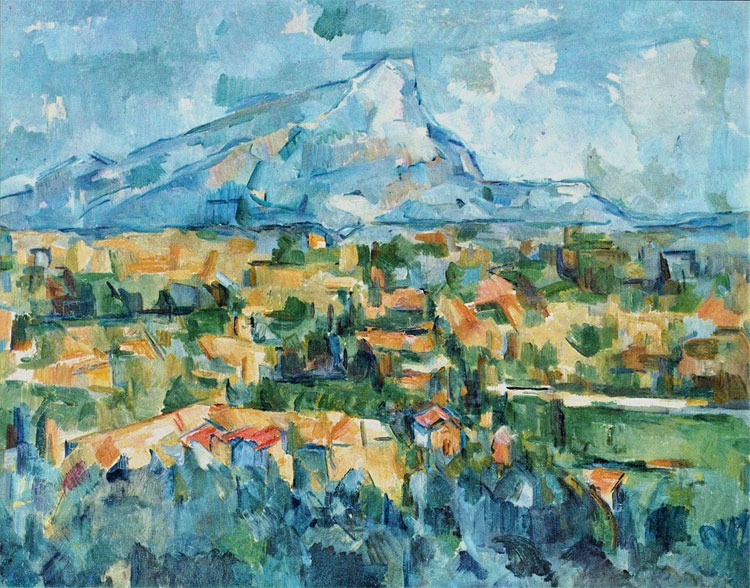
"Mont Saint Victoire" (1904) by Paul Cezanne
Vincent van Gogh
The painter Vincent van Gogh (1853 - 1890) knows every child today - not only because of his pictures, but above all because of his dramatic and regrettable biography. Disdained and despised during his lifetime, he is now one of the best-known artists of all - not least because of the art market, which trades his pictures in dizzying sums. The wild, passionate painting of a van Gogh would hardly be conceivable without oil paints from a tube. Van Gogh's paintings herald modernism in art.
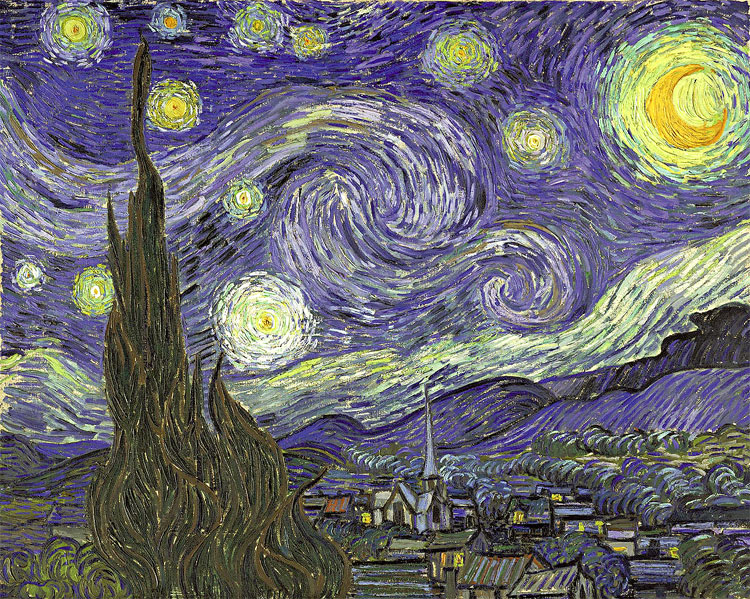
"Starry Night" (1889) by Vincent van Gogh
Modern oil painting - far from over ...
... Many other painters have shaped the history of oil painting, for example Pablo Picasso, Henri Matisse, Expressionist painters such as Franz Marc and August Macke, then abstract artists such as Wassily Kandinsky and Kasimir Melewitsch, and today's painters such as Georg Baselitz and Gerhard Richter.
They are all protagonists in the history of painting.
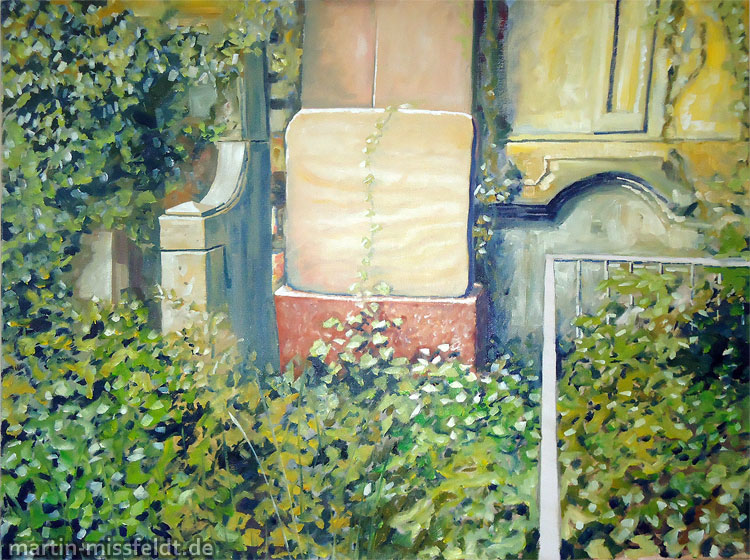
"The Tomb of the Unknown Painter", 70 x 100 cm, oil on canvas, 19.9.2015
